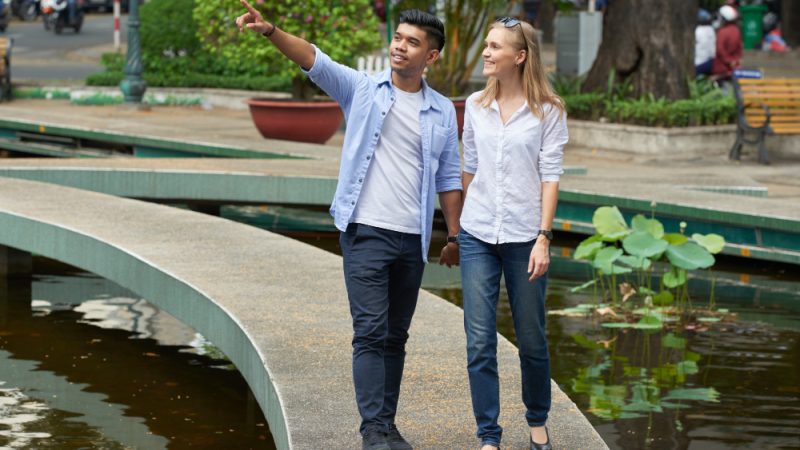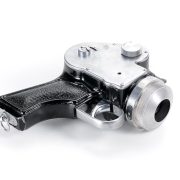Visit Siem Reap vs Singapore Planning your next trip but torn between the ancient wonders of Siem Reap and the modern marvels of Singapore? While both destinations offer unforgettable experiences, they cater to very different budgets. Siem Reap is often viewed as a backpacker’s paradise, while Singapore is known for luxury and high-end infrastructure. However, with the right strategies, both can be explored affordably.
In this guide, we’ll break down 10 budget tips to help you compare Siem Reap vs Singapore, so you can make an informed decision based on your wallet and wanderlust.
1. Accommodation: Hostels vs Capsules
Visit Siem Reap vs Singapore Siem Reap: You’ll find hostel beds starting at \$5 per night, and comfortable guesthouses with pools for as little as \$15–\$25. Boutique hotels often include breakfast and free airport pickups.
Singapore: The city offers clean and modern capsule hostels starting from \$20–\$30. While pricier than Siem Reap, Singapore’s hostels are high-quality and centrally located. Budget hotels start at around \$50–\$70 per night.
Budget Tip: In Siem Reap, splurge on a boutique stay for the price of a Singapore dorm. In Singapore, stick to capsule hostels or book during off-peak seasons for better rates.
2. Transportation: Tuk-Tuks vs MRT
Visit Siem Reap vs Singapore Siem Reap: Transportation is cheap and flexible. A tuk-tuk ride across town costs \$1–\$3, and a full-day Angkor Wat tour by tuk-tuk is about \$15–\$20.
Singapore: The MRT (Mass Rapid Transit) is clean, fast, and affordable, with most rides costing under \$1.50 using an EZ-Link card. Buses are equally efficient.
Budget Tip: In Siem Reap, negotiate tuk-tuk prices or use ride-hailing apps like Grab. In Singapore, get an EZ-Link or NETS FlashPay card for discounted fares and easy top-ups.
3. Food: Street Eats vs Hawker Centres
Siem Reap: Street food is incredibly cheap. A hearty Cambodian dish like Amok or fried noodles costs \$1–\$3 at local stalls. Western meals at cafes run about \$5–\$8.
Singapore: While known as pricey, you can eat affordably at hawker centres like Maxwell or Lau Pa Sat, where a meal costs \$3–\$6. Food courts in malls also offer value.
Budget Tip: Stick to local eats—no fancy Western restaurants. In both cities, you’ll eat like royalty on a shoestring by going where the locals dine.
4. Attractions: Temples vs Tech Parks
Siem Reap: The Angkor Archaeological Park pass is the biggest expense—\$37 for one day, \$62 for three days, or \$72 for a week. Beyond Angkor, many temples, museums, and cultural sites cost just a few dollars.
Singapore: Most attractions cost more: Marina Bay Sands SkyPark (\$20), Gardens by the Bay Flower Dome (\$12), or the Singapore Zoo (\$35). Some places like Sentosa Island beaches and light shows are free or low-cost.
Budget Tip: In Siem Reap, buy a multi-day Angkor pass and explore temples slowly. In Singapore, focus on free experiences like parks, street art, and light shows.
5. Drinks and Nightlife: Pub Street vs Clarke Quay
Siem Reap: Drinks are super affordable. You’ll find beers for \$0.50 and cocktails for \$2–\$3 at the lively Pub Street. Many bars also offer happy hours with two-for-one deals.
Singapore: Alcohol is heavily taxed. A beer at a bar can cost \$10–\$12, and cocktails go for \$15+. Look for happy hours, but even then, prices are steep compared to Cambodia.
Budget Tip: In Siem Reap, nightlife is budget-friendly. In Singapore, pre-game at your hostel or grab drinks from convenience stores like 7-Eleven before heading out.
6. Shopping: Markets vs Malls
Siem Reap: Visit Old Market or Made in Cambodia Market for local crafts, clothes, and souvenirs. Bargaining is expected, and you can buy unique items for a few dollars.
Singapore: Shopping here means modern malls like Orchard Road or Bugis Junction. Prices are fixed, and while budget brands exist (e.g., Uniqlo, Daiso), expect to pay more overall.
Budget Tip: For authentic and inexpensive souvenirs, Siem Reap wins. In Singapore, browse malls for the experience but shop at budget chains or flea markets for savings.
7. SIM Cards and Connectivity
Siem Reap: SIM cards are cheap and readily available. You can get a 4GB data SIM for about \$5–\$10 with great coverage. Wi-Fi is common in hotels and cafes.
Singapore: SIMs are more expensive, but you get high-speed internet. Expect to pay around \$12–\$15 for a tourist SIM with 100GB and local call credits.
Budget Tip: Both destinations offer excellent connectivity. If you’re hopping between cities, choose regional providers with roaming.
8. Activities and Tours
Siem Reap: Day tours, cooking classes, and countryside trips are very affordable. You can join a guided tour of Angkor for \$10–\$20, and cooking classes cost around \$25–\$30.
Singapore: Activities are pricier. Museum tickets cost \$10–\$25, and popular tours or day trips to Sentosa or nearby islands can be \$50+.
Budget Tip: Look for free walking tours in both cities. In Siem Reap, book tours directly with locals for lower prices. In Singapore, group bookings or online deals can save you money.
9. Cultural Experiences
Siem Reap: You can experience traditional Apsara dance shows with dinner for \$10–\$15, or visit Buddhist temples and participate in blessings for free or by donation.
Singapore: Cultural neighborhoods like Little India, Chinatown, and Kampong Glam offer free exploration. Events like the Singapore Night Festival or Chingay Parade are visually rich and often free.
Budget Tip: In Siem Reap, take advantage of low-cost traditional shows. In Singapore, check local calendars for free public festivals and performances.
10. Visas and Entry Costs
Siem Reap (Cambodia): Most travelers require a tourist visa, which costs \$30 on arrival or online. It’s valid for 30 days and easy to obtain.
Singapore: Most nationalities can enter visa-free for 30–90 days. There are no visa fees, making it convenient for short stays or layovers.
Budget Tip: If you’re planning a short trip, Singapore’s visa-free entry makes it easier and cheaper upfront. However, Cambodia’s visa is simple and low-cost for longer adventures.
Conclusion: Which Is the Better Budget Destination?
So, Siem Reap vs Singapore—who wins the budget battle?
Siem Reap is clearly the cheaper option overall, offering affordable accommodation, food, nightlife, and experiences. It’s ideal for backpackers, slow travelers, and cultural explorers.
Singapore, while more expensive, is not out of reach for budget travelers. With smart planning—staying in capsule hostels, eating at hawker centres, and enjoying free attractions—you can enjoy a slice of the high life without breaking the bank.
If you’re tight on money and want an immersive, off-the-beaten-path experience, Siem Reap is the way to go. If you’re willing to spend a bit more for clean infrastructure, modern vibes, and cosmopolitan culture, Singapore is worth it.
Why not plan for both? A few days in Singapore followed by a week in Siem Reap could be the best of both worlds.
FAQs
1. Which city is better for digital nomads on a budget?
Siem Reap is better suited for long stays on a low budget, offering cheap accommodations and cafes with good Wi-Fi. Singapore is great for short-term stays but costs add up quickly.
2. Can you visit Singapore on \$50 a day?
Yes, with careful planning. Stay in a hostel, use public transport, eat at hawker centres, and enjoy free attractions. You won’t live luxuriously, but it’s doable.
3. Is Siem Reap safe for solo budget travelers?
Yes, Siem Reap is generally safe. Use common sense—avoid walking alone at night in remote areas, keep valuables secure, and choose well-reviewed accommodations.
4. What’s the cheapest time to visit each city?
Siem Reap: Low season (May–September) offers big discounts, though it’s rainy.
Singapore: Avoid public holidays and festivals; mid-year and just after New Year offer better rates.
5. Can I combine both cities in one trip?
Absolutely! Fly into Singapore (a major hub), enjoy a few days, then catch a budget flight to Siem Reap. Carriers like AirAsia and Scoot often offer cheap fares.
Also read : Behind the Scenes Jobs: Top Hidden Careers That Make the Magic Happen









